The changing landscape of a reclusive nation
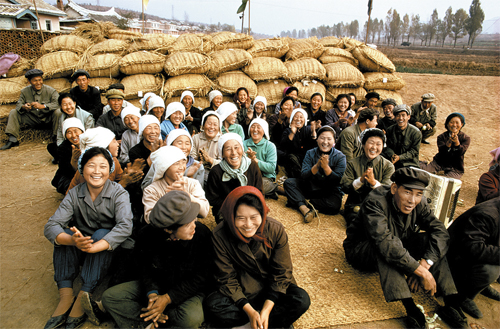
North Korean workers take a break, 1970s, by H. Edward
North Korea remains quiet and insulated despite the worldwide media coverage that greeted the recent rocket launch crisis and the never-ending stories about the communist state’s nuclear weapons program.
Few photographers have had the freedom to enter the impoverished totalitarian society, which makes the new exhibition at Gongpyeong Gallery in Jongno District, central Seoul, all the more interesting.
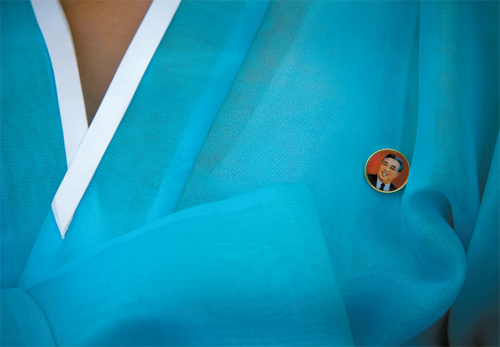
Woman wearing a Kim Il Sung badge in Pyongyang, 2006, by Yannis Kontos of Greece.
“Changing Social Landscape: Democratic People’s Republic of Korea (1950-2008)” contains 70 pictures by nine photographers from different fields who visited the North to capture the land through their lenses over the last six decades.
One of the most famous photographers whose work is on display is pioneering female photojournalist Margaret Bourke White.
During the 1950s, she traveled into the North and produced extraordinary black-and-white images of North Korean people after the Korean War (1950-1953). French documentary maker Chris Marker undertook a similar trip during that period.
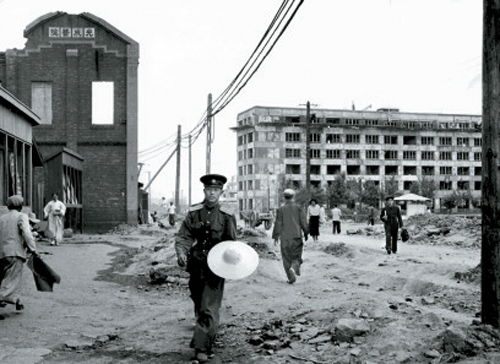
Pyongyang, 1955, by Chris Marker
These days such a trip would not be possible for photographers. “They probably went to the North out of humanistic curiosity,” said Chung-Ang University Professor Lim Young-kyun, the curator of the exhibition.
Another photographer, Seok Im-saeng, who worked as a photographer at Korea Hydro and Nuclear Power Co., went to the North in 1997 as part of the Korean Peninsula Energy Development Organization program.
Seok stayed in the North for seven years until he returned to the South in 2004.
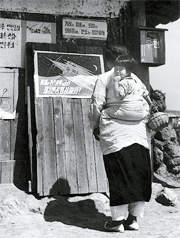
A woman with a baby, 1955, by Chris Marker.
Seok was able to catch vivid images of the reclusive regime while many photographers could only get images of the superficial side of the country due to restrictions of time and space.
Some of the pieces show the technological development of the North.
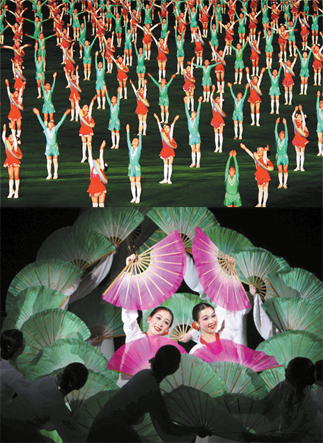
Top to above: Mass Games in Pyongyang, 2005, by Lao Liu of China.:Women perform a traditional fan dance in Pyongyang, 2008, by Chang W. Lee of the United States.
Kim Jong-il is painted on the wall wearing a suit and a jacket (not his usual khaki or olive green jumpsuit), while those behind him wear clothes indicating their respective occupations, like a doctor or an engineer.
The curator Lim said he wanted to show that North Korea has changed but only very slowly, almost not at all.
In his personal view, the two Koreas will reunite as time passes.
“From the perspective of global history, all divided countries are united again,” he commented. “This process repeats itself over and over again.”
The exhibition runs until May 5. It is open from 10 a.m. to 6 p.m. during weekdays and 12 to 7 p.m. on weekends. To get to Gongpyeong Gallery, go to Jonggak subway station, line No. 1, exit 3. For more information, call (02) 3210-0071.
By Lee Hae-joo Contributing Writer [estyle@joongang.co.kr]










with the Korea JoongAng Daily
To write comments, please log in to one of the accounts.
Standards Board Policy (0/250자)